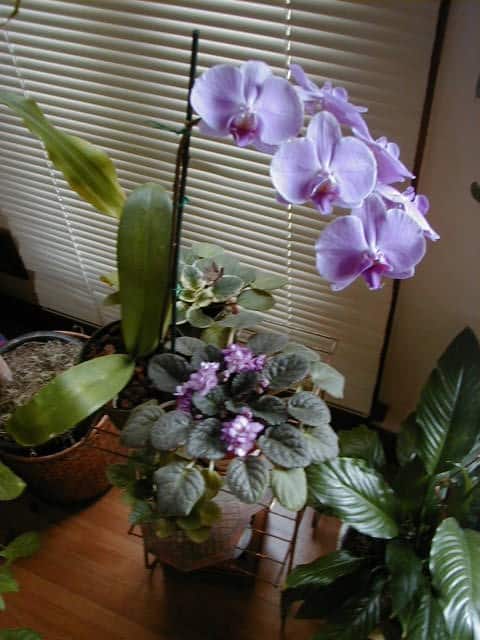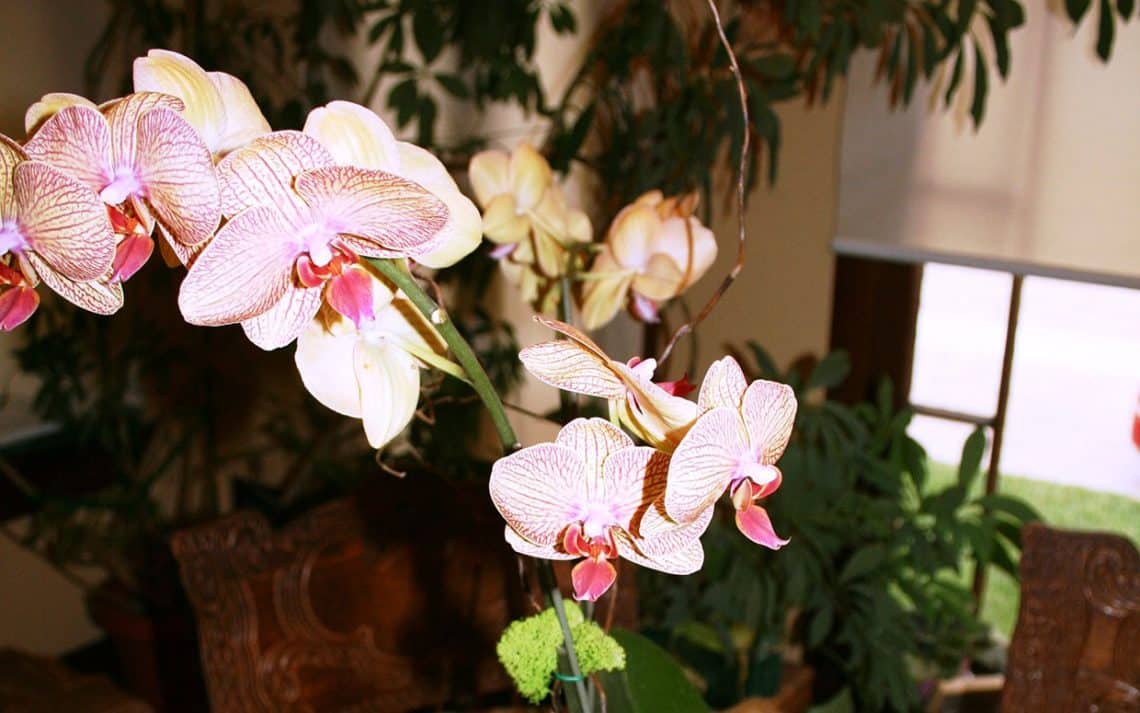Graceful and elegant, orchids create stunning focal points in the home. If you want to try growing them in your indoor garden, your best choice is Phalaenopsis. Commonly known as moth orchid, because its flowers perch along its stems and look like moths in flight, Phalaenopsis come in a variety of colors, including yellow, pink, lavender and white.
Moth orchids tend to bloom spring through fall as houseplants, and their flowers last for two to three months at a time.
To experience a long-lasting orchid show in your indoor garden, keep the following growing tips in mind.
Watch temperatures. Originating in the jungles of the Philippines, moth orchids do best in temperatures ranging from 62 to 85 degrees F. Keep them away from cold, drafty areas of the home during the winter months.
Provide bright light. In their natural habitat, moth orchids grow in trees in the jungle where they receive bright light but no direct sunlight. To replicate these conditions indoors, keep moth orchids in a bright area of the home, such as an eastern or southern window, or under full-spectrum lighting.
Determine if a moth orchid is receiving the correct amount of light by examining the leaf color. Light yellow leaves mean too much light and deep green leaves signify too little light. Yellow-green leaves indicate that the plant is receiving just the right amount of light.
Check for crown rot. Moth orchids are epiphytic plants that grow upside down suspended from trees in the jungle. When grown as houseplants, you cultivate them in bark, which keeps them erect. Growing them in this way causes them to become susceptible to deadly crown rot. Prevent this by not overwatering.
Water correctly. Moth orchids are accustomed to moist conditions, so keep the bark on the moist side. How often to water depends on the season and temperatures in your home. The bark will dry out more quickly in hot, dry weather. You know it’s time to rewater when the plan becomes lightweight.
Provide humid conditions. Moth orchids require moist air like found in the jungle. Create a humidity tray for your orchid by filling a waterproof tray with gravel or marbles and adding water to just below the surface. Place the phalaenopsis container on top of this. Evaporation from the water creates humid conditions surrounding the plant.
Fertilize orchids regularly. Feed moth orchids a ¼-strength solution of orchid food on a weekly basis when you water. Under-fertilizing results in poor flowering, whereas too much food can burn orchid roots.
Prune spent orchid blooms. Once a flower stalk stops blooming, the plant will bud up and bloom in about three months if you cut the stalk off between the third and fourth node up from the base of the plant. The nodes are bumps on the stalk where new branches and buds will form. Keep repeating this process and the plant will continue to re-bloom.
Repot orchids periodically. Repot moth orchids in new bark every one to two years when the bark has started to break down and decompose. Put the plant in a new pot when it isn’t in bloom, because repotting during flowering can cause the blooms to fall off prematurely. Between repotting, let the spongy moth orchid roots grow out over the edge of the pot. In their native habitat they use the roots to crawl throughout trees and to absorb water.
Keep an eye out for orchid pests. Mealybugs tend to infest orchids. Treat by spraying with 70 percent isopropyl alcohol. Let the alcohol dry and then rinse the dried up pests off with water.

Julie Bawden-Davis is a garden writer and master gardener, who since 1985 has written for publications such as Organic Gardening, Wildflower, Better Homes and Gardens and The Los Angeles Times. She is the author of seven books, including Reader’s Digest Flower Gardening, Fairy Gardening, The Strawberry Story, and Indoor Gardening the Organic Way, and is the founder of HealthyHouseplants.com.

